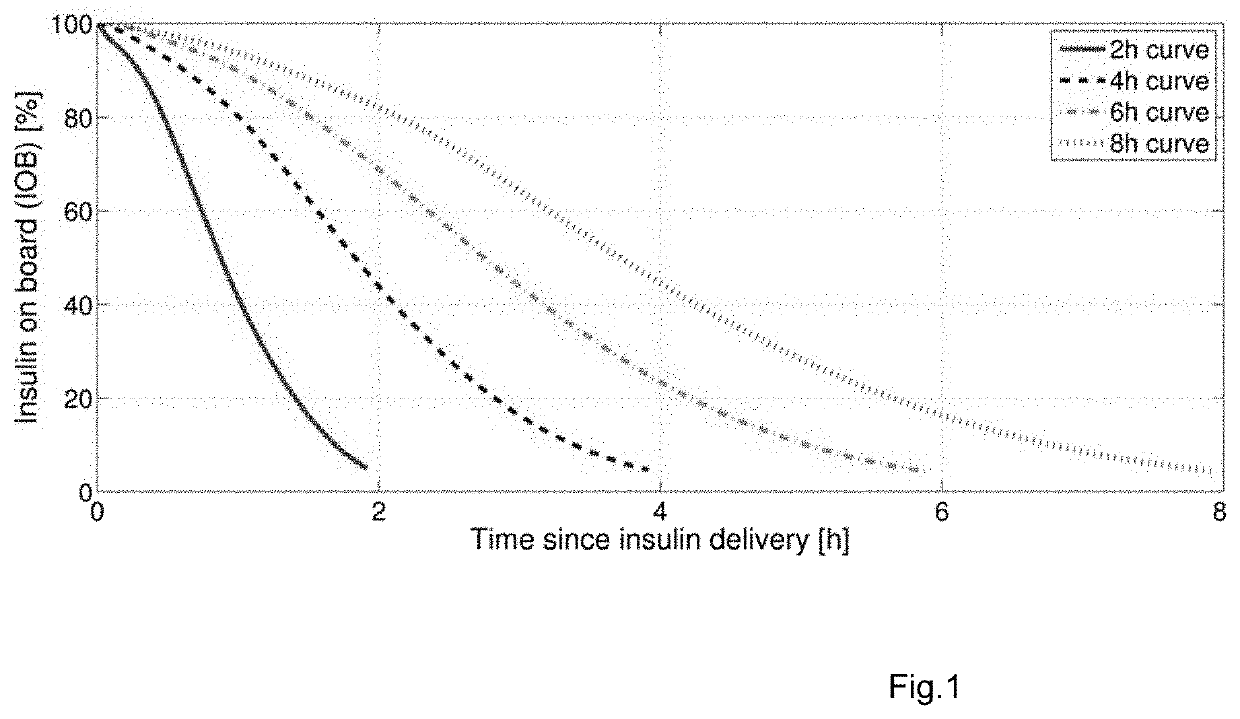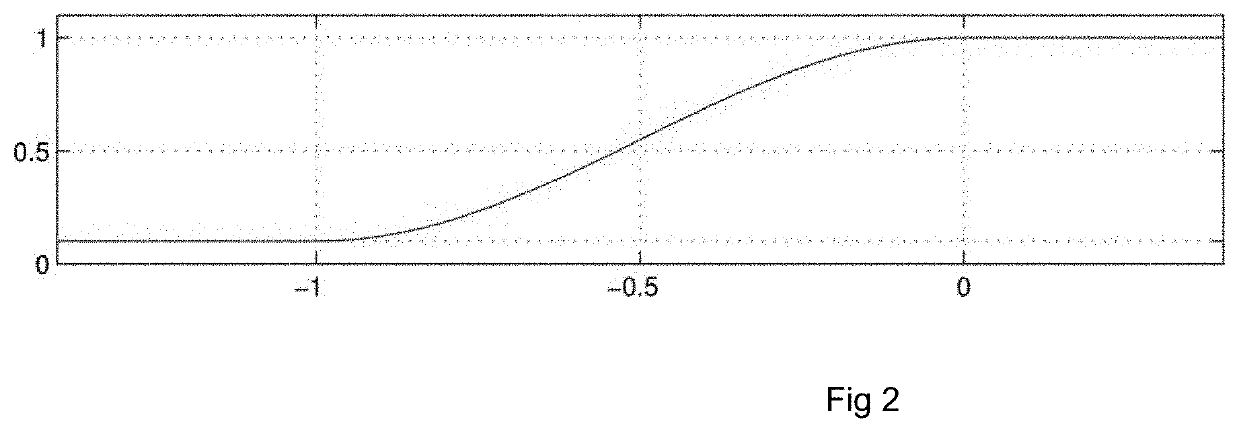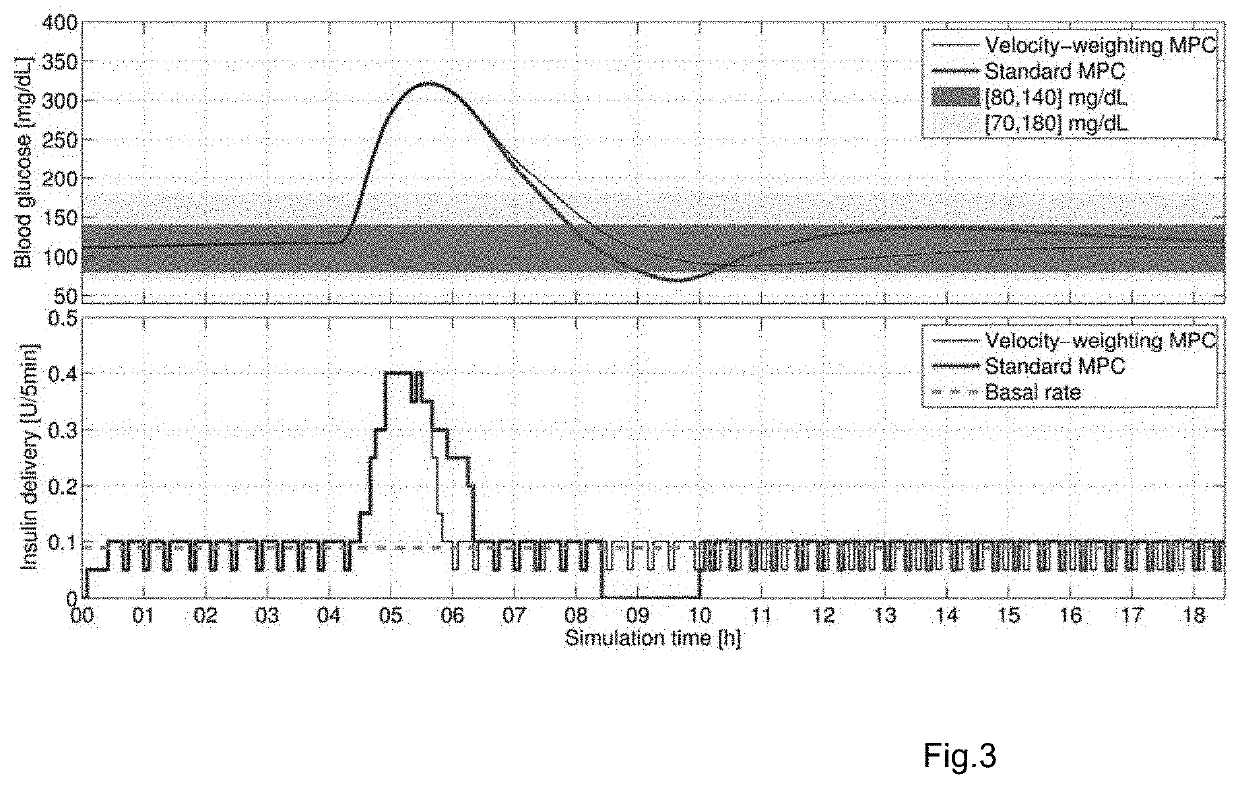Velocity-weighting model predictive control of an artificial pancreas for type 1 diabetes applications
a type 1 diabetes and pancreas technology, applied in the field of type 1 diabetes application velocity-weighting model predictive control of an artificial pancreas, can solve the problems of coma or death, dizziness or disorientation, and great difficulty in maintaining healthy blood-glucose levels, so as to improve safety, reduce the occurrence of controller induced, and improve the effect of effective hyperglycemia correction
- Summary
- Abstract
- Description
- Claims
- Application Information
AI Technical Summary
Benefits of technology
Problems solved by technology
Method used
Image
Examples
Embodiment Construction
[0032]A key component in a successful artificial pancreas system designed to maintain the blood glucose concentrations of people with type 1 diabetes mellitus within the euglycemic zone (80-140 mg / dL) is the control algorithm that automatically directs the delivery of insulin to be administered to a subject with type 1 diabetes. There are many varieties of control algorithm; this invention is of relevance to classes of control strategies based on “model predictive control” (MPC) algorithms. These are real-time optimization based controllers that perform optimal insulin delivery with respect to predicted glucose outcomes and an objective function, also known as a cost function.
[0033]The present invention improves the safety of an artificial pancreas device by strategically reducing the risk of insulin over-delivery and the resulting controller-induced hypoglycemia. This is achieved by employing a novel structure of objective function for use with the MPC optimization. Instead of a fi...
PUM
 Login to View More
Login to View More Abstract
Description
Claims
Application Information
 Login to View More
Login to View More - R&D
- Intellectual Property
- Life Sciences
- Materials
- Tech Scout
- Unparalleled Data Quality
- Higher Quality Content
- 60% Fewer Hallucinations
Browse by: Latest US Patents, China's latest patents, Technical Efficacy Thesaurus, Application Domain, Technology Topic, Popular Technical Reports.
© 2025 PatSnap. All rights reserved.Legal|Privacy policy|Modern Slavery Act Transparency Statement|Sitemap|About US| Contact US: help@patsnap.com



